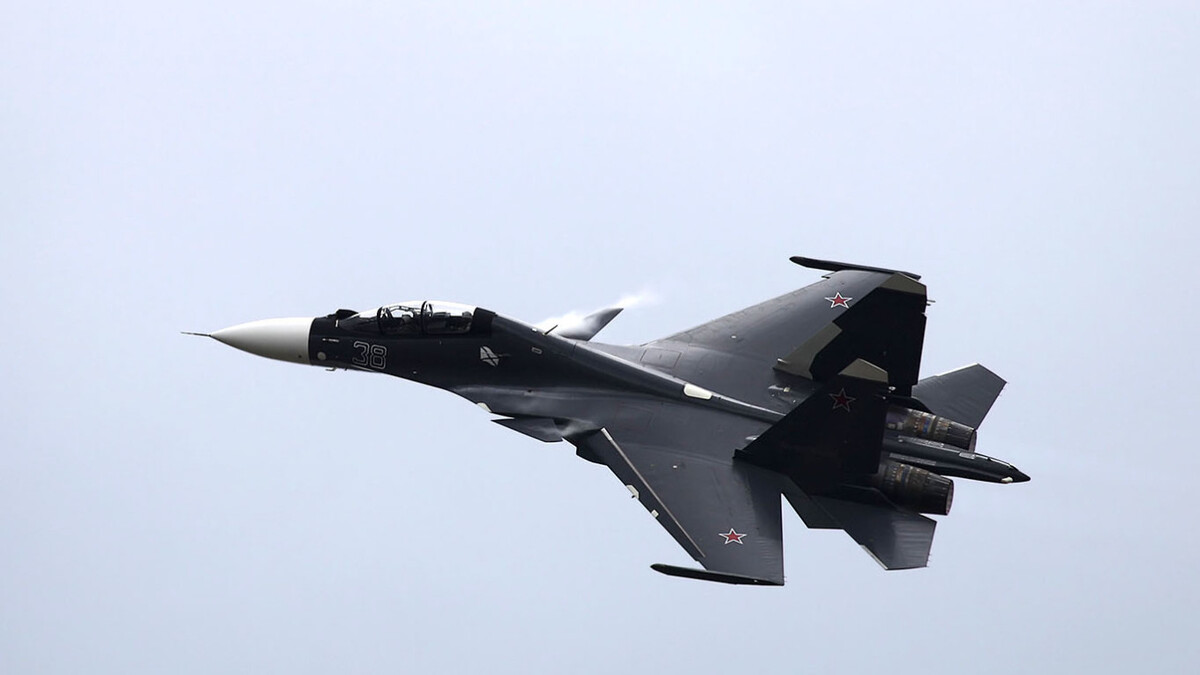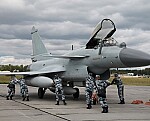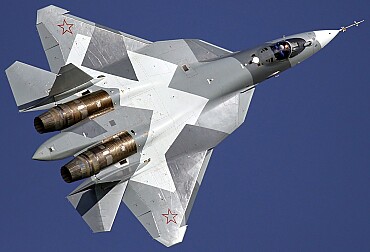Friendly Fire Incident: Russian Su-30SM Jet Downed Over Crimea Amid Ukrainian Drone Barrage
In a striking illustration of the chaotic and high-stakes environment over annexed Crimea, a Russian Su-30SM fighter jet was reportedly shot down by its own air defense systems during a fierce overnight battle to repel a wave of Ukrainian drone strikes. The incident, confirmed by Ukraine's Navy, points to significant operational challenges for Russian forces under intense pressure and underscores the increasing effectiveness of Ukraine's drone tactics in sowing confusion.

According to Ukraine's Navy spokesman Dmytro Pletenchuk, citing military intelligence, intercepted radio communications from Russian forces painted a clear picture: both engines of the advanced Su-30SM aircraft caught fire, leading to the crew's successful ejection before the jet plummeted to the ground in northwestern Crimea. "They were repelling Ukrainian attacks so actively that they ended up shooting down their own plane," Pletenchuk told Ukrainian television, highlighting the ironic tragedy of the situation.
The loss of an Su-30SM, a highly capable multirole fighter jet renowned for its air superiority and ground attack capabilities, represents a significant setback. These aircraft are a cornerstone of Russia's modern air force, valued for their advanced avionics, potent weaponry, and ability to conduct complex missions. Their accidental destruction by friendly fire not only exacts a high financial cost but also signals potential systemic issues in coordination and command-and-control within Russia's air defense network, particularly during large-scale, dynamic engagements.
Russian Silence Amidst Pro-War Acknowledgment
Officially, Russian authorities have maintained a conspicuous silence regarding the friendly fire incident. This lack of acknowledgment is characteristic of Moscow's approach to reporting losses or setbacks, especially those that might point to internal operational failures.
However, the unofficial narrative from pro-war Russian Telegram channels offered a glimpse into the event, confirming the loss of an Su-30SM and the successful rescue of its crew. While these channels stated the cause of the loss was "unknown," their reports inadvertently corroborated the Ukrainian intelligence, focusing on the positive aspect of crew survival rather than the embarrassing circumstances of the aircraft's destruction. This discrepancy between official silence and unofficial partial disclosure speaks volumes about the pressure on Russian military information flows.
A Night of Widespread Drone Attacks
The downing occurred amidst a significant and widespread Ukrainian drone attack across the Crimean Peninsula and the Black Sea. Russia's Defense Ministry claimed success in mitigating the assault, stating its air defense systems intercepted and destroyed 61 Ukrainian drones overnight, with 38 of them targeted specifically over Crimea.
Despite these claims of high interception rates, the Ukrainian drone attacks appear to have inflicted tangible damage. Sergei Aksyonov, the Moscow-installed Governor of Crimea, confirmed that several electrical substations across the peninsula were damaged, resulting in temporary power outages in various locations. Notably, Aksyonov's public statement, while acknowledging the drone damage, entirely omitted any mention of the Su-30SM downing.
Ukrainian media, drawing on reports from pro-Kyiv Crimean Telegram channels, further suggested that one of the primary targets may have been a facility at the strategically important Gvardeyskoye (Hvardiiske) air base of the Russian Aerospace Forces in central Crimea. Navy spokesman Pletenchuk specified that a Russian oil depot caught fire during the strikes, with news outlet RBC Ukraine identifying it as an ATAN gas station network’s oil depot at the Hvardiiske base. This base is particularly critical for Russia, as it is reportedly used for storing Iranian-designed Shahed drones, which have become a key component of Russia's terror campaign against Ukrainian cities and infrastructure.
Strategic Implications and Operational Challenges
The incident in Crimea serves as a stark reminder of the escalating intensity and complexity of the air war. Crimea, illegally annexed by Russia in 2014, holds immense strategic importance as a crucial logistical hub and military outpost for Russian forces in southern Ukraine and the Black Sea. Consequently, it has become a frequent target for Ukrainian forces seeking to degrade Russia's military capabilities and project power.
For Russia, the friendly fire incident underscores the immense pressure on its air defense crews, who must contend with saturation drone attacks designed to overwhelm and confuse. The deployment of numerous, often slow-moving and low-flying drones alongside potentially more sophisticated aerial threats can create a "fog of war" for air defense operators, increasing the risk of misidentification and accidental engagement of friendly assets. Such incidents can significantly erode morale, undermine trust between different military branches, and raise questions about the adequacy of identification friend-or-foe (IFF) systems and coordination protocols under combat stress.
For Ukraine, the event highlights the effectiveness of its asymmetrical warfare strategy. While the loss of a Russian fighter jet is a victory in itself, achieving it through Russian forces downing their own aircraft offers significant psychological and informational advantages. It demonstrates that even a seemingly impenetrable air defense can be provoked into costly errors, directly impacting Russia's expensive modern assets and potentially forcing a reevaluation of defensive tactics.
As the conflict grinds on, the skies over Crimea remain a highly contested and dangerous arena. This friendly fire incident is not just a statistical loss; it is a profound illustration of the inherent risks and unintended consequences that arise when defensive systems operate under extreme duress, fueled by the relentless pressure of a determined adversary.








